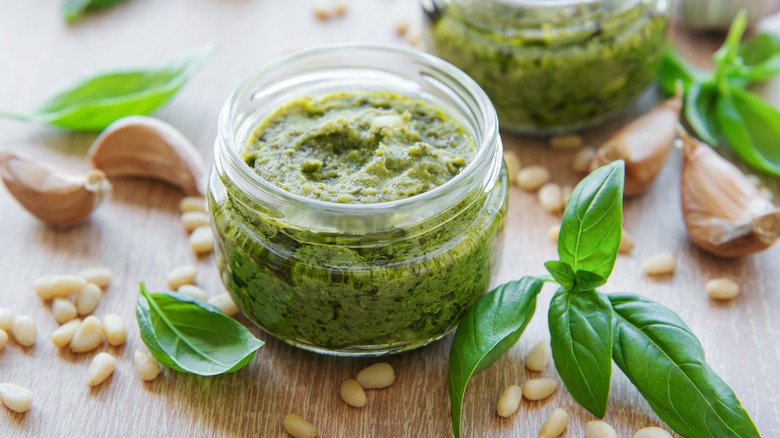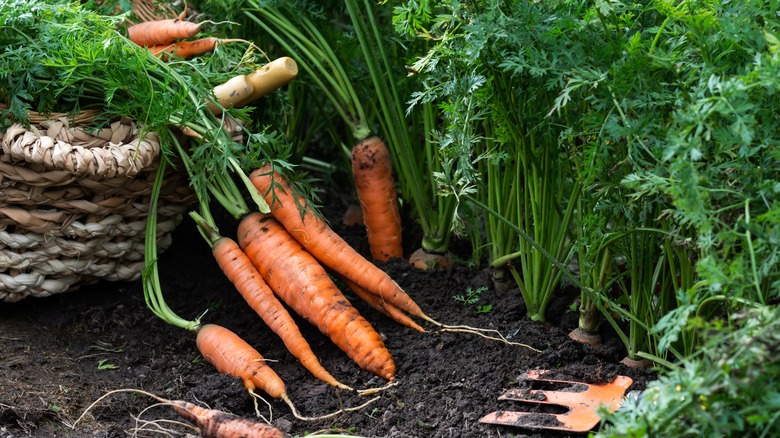The Unexpected Ingredient Swap That Will Overhaul Your Pesto
If you're familiar with pesto, you know that it's an earthy green sauce consisting of fresh basil, parmesan, pine nuts, garlic, and olive oil. It's the perfect alternative to a tomato or cream-based sauce, and it goes just as well drizzled over pizza or spread onto bread as it does tossed in cooked spaghetti. According to Delish, the sauce originated in Genoa, Italy, and got its name because "pesto" is past tense for "pestare," which means "to crush." This makes sense because traditionally pesto is made in a mortar and pestle.
While basil is the prominent player in pesto, giving it that vibrant green color and earthy flavor, there are other leafy greens that can maintain both the appearance and flavor while reducing food waste. When it comes to certain vegetables, prepping them means wasting a lot of the stems or leaves that we simply don't know what to do with. Herbs go bad quickly and spinach can sometimes turn to mush, but one sweeter veggie that has an entire counterpart that isn't utilized enough are carrot tops.
Carrot tops
Oftentimes when prepping carrots, we're so focused on the vegetable itself that we completely ignore the bright green herb-like leaves attached to the tops and just discard them without question. Not only are they beautiful, but they have a complex flavor and contain just as many nutrients as carrot root does. According to The Guardian, carrot tops have six times as much vitamin C as their roots along with loads of potassium, calcium, and phytonutrients.
MasterClass has a recipe for pesto using carrot tops in place of basil that also includes lemon juice to add an acidic brightness. The outlet also recommends washing the carrot tops in a bowl of cold water, gently shaking the greens, and replacing the water as needed until clear. This is because they often trap a lot of dirt at the base which can otherwise make for a gritty, lackluster sauce. From there, you can use a mortar and pestle, blender, or food processor to combine your sauce into the consistency you like.
Incorporating this herbaceous green not only cuts down on kitchen waste, but also adds an earthy flavor that will satisfy anyone craving traditional pesto, while also giving you an excuse to make pesto the next time you're trimming carrots. In fact, you might just find that this swap is a permanent change from your go-to pesto recipe.

